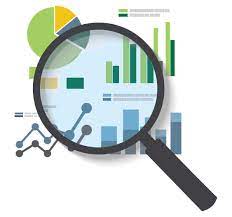Business Metrics that Have Impact

- Customer acquisition cost. Divide the total amount of money you’ve spent on marketing over a set period by the number of new customers you’ve gained. The result is your cost per new customer, also known as your customer acquisition cost. To get an even better read, divide your marketing costs into two buckets: one you spend on current customers and one for money spent to acquire new ones. Now you have two metrics: customer acquisition cost AND customer retention cost. Compare these figures against prior years to see if you are becoming more efficient.To go a step further, look at how much each new customer spends on average compared with how much it costs to acquire them. Knowing your rate of return for each customer can help you revise your marketing strategy.
- Lead-to-client conversion rate. For many businesses, generating leads is an integral part of the selling process. If this is true for your business, clearly define each step of the sales funnel from lead to purchase. You can judge how successful your sales efforts are over time by calculating how many qualified leads are converted to sales. Remember to use these measures to refine and improve your selling process. Even a tried-and-true conversion process can get tired, but if you are not measuring it you may not know until it is too late.
- Website traffic. Use tools such as Google Analytics to find out who is visiting your website, from where, and what they spend the most time on while they’re there. You can learn a lot about your potential customers and your market by keeping notes on how your website traffic changes over time and how it reacts to new content. Just don’t get stuck inside this analysis.
- Seasonality. Understand and keep track of the seasonal trends for both sales and number of orders by month in your business. This helps manage human resources and cash flow in both busy and slow periods. Examining these metrics for sales and web traffic can help you prepare inventory and staffing for the busy season. It will also help you time the scheduling of technical upgrades and equipment repairs for expected slow periods. You can also use this information to shift seasonality with marketing offers to make better use of your staff during slow times.
- Cash burn rate. Keeping a close watch on your cash flow statement as well as your income and balance sheet is the key to keeping your business running smoothly. Simply subtract how much cash you have at the start of the month from what you have at the end of the month. You can then divide your reserves by your cash burn rate to see how many months you can sustain that rate. A key to the usefulness of this measurement is maintaining a forward-looking financial forecast for the next 12 months. This will help you take timely actions to avoid a cash crunch, such as cutting costs, improving sales or collecting accounts receivable.
Remember that measurements for measurements sake is just busy work. The key to all of them? They need to provide an actionable result for your business.




